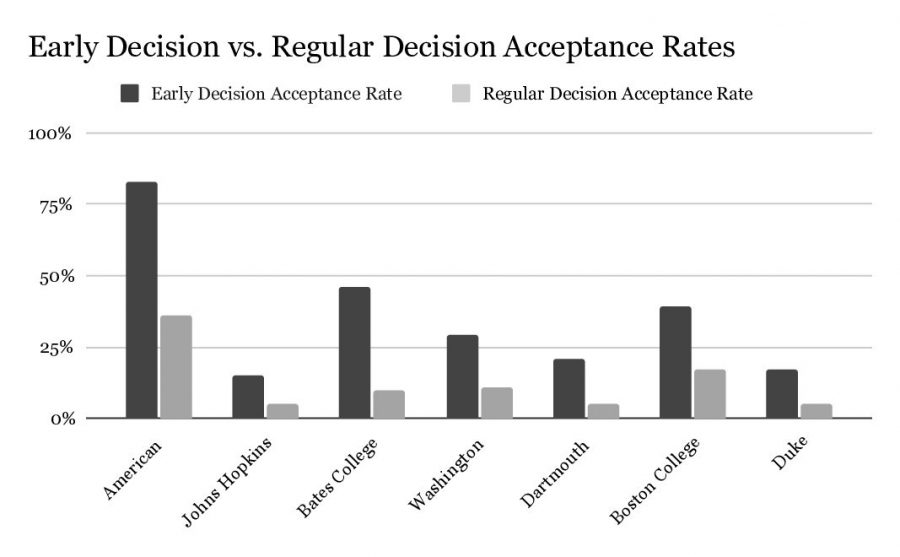In the next few months, many students from the class of 2025 will join the college class of 2029. Throughout their high school careers, these students have researched, toured and considered a host of colleges and universities. Over the course of this school year, seniors will choose the next part of their future after high school, which may include joining the workforce, attending trade school or exploring another pathway they find interesting. Additionally, many seniors will consider a college degree, and commit to a college before the deadline in May.
The most important part of the college admissions process for seniors is applying to the colleges that they have chosen. There are three main avenues for admission: regular decision, early action and early decision. Through regular decision, students can apply to any school they wish and are able to choose which school they would like to join out of the schools that accept them. Early Action is similar such that if a student gets accepted into the school, they are not required to attend that institution. A variant of the early action method is restrictive early action (REA). In REA, students are only able to apply early to the selected institution, but they can choose to accept an offer from a school they applied to through regular decision. Some schools with an REA policy state that students can apply to public colleges and universities, but not any other private institutions. The last main method of college admission is early decision. In early decision, students applying must enter a binding contract that states that the student will attend that institution if they are accepted.
Since many universities are considered selective, meaning that only a fraction of applicants will be successful in getting into the school, students hoping to get into a selective school may choose to apply early decision. When analyzing the number of applicants and acceptances, it is clear that most schools that offer early decision applications take a greater percentage of applicants in the early decision round than in the regular decision round. For example, in the class of 2028 admissions Duke University accepted 12.92% of students who applied through Early Decision. In contrast, only 4.1% of students who applied through Regular Decision that year were accepted. This pattern is not unique to Duke. Top colleges and universities like Northwestern, Brown, Cornell, Dartmouth, Northwestern, University of Pennsylvania, Colby College, NYU and UChicago accept a greater proportion of students who apply through early decision than students who apply through regular decision. From a college’s perspective, this makes sense. If a student chooses to apply early decision, they are more committed to the school. This means those students who accept the offer will increase the college’s yield rate (% of students who accept an admission offer) and create a freshman class of students who are passionate about the school.
For seniors and their families, the college admissions process can be disappointing, stressful, exciting, rewarding or some combination of those feelings. The most important thing to remember is that while where you go to college is important, the institution that a student chooses to attend doesn’t define their life. Rejection from a top college doesn’t mean a student isn’t smart or won’t be successful in the future. Applying through early decision can increase an applicant’s chances of an admission offer, but due to its binding nature, it requires a conversation between a student, their parents/guardians and the student’s guidance counselor. Notably, applying through early decision can make the cost of attending college more expensive, as a student cannot consider a potentially less expensive option. Realizing this, the choice to apply ED is both a financial and personal decision.


